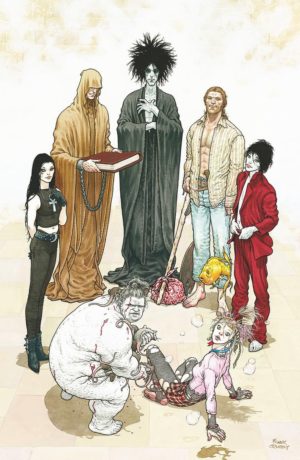It’s the 23rd new comic book day of the new year! This post covers DC Comics June 5 2024 releases, which actually hit comic stores on Tuesday June 4 2024. Missed last week’s releases? Check out last week’s post covering DC Comics May 29 2024 new releases.
(DC is still releasing their comics on Tuesday until the start of July, but I think most folks think of Wednesday as release day, so that’s how I’m labelling my posts until then.)
This week in DC Comics: DC debuts Compact Comics for Batman & Watchmen, Dawn of DC collections for Hal Jordan & Shazam, climaxes for Zdarsky Batman & GWW Ivy, a My Adventures with Superman cartoon comic and more!
This list includes every comic and digital comic out from DC this week, plus collected editions including omnibus, hardcover, paperback, and digest-sized formats. I recap and review every new single issue. Plus, for every new release, I’ll point you to the right guide within my Crushing Comics Guide to DC Comics to find out how to collect each character in full – and, if a guide is linked from this post, that means it is updated through the present day!
DC Comics June 5 2024 Collected Editions
Barda
(2024 paperback, ISBN 978-1779511133 / digital)
A new out-of-continuity Big Barda graphic novel exploring her origins and relationship to Scott Free from author/illustrator. Ngozi Ukazu.
Batman: The Court of Owls Saga – DC Compact Comics Edition
(2024 smaller-than-digest-size paperback, ISBN 978-1779527271 / digital)
See Guide to Batman. DC’s new Compact Comics are upon us! These are chunky paperbacks that collect 10+ issues of massive hit runs for just $10 in a format that is slightly smaller than “digest” size. It’s a bane for old eyeballs like mine, but a perfect format for newer fans and manga readers! This book collects the first 11 issues of Scott Snyder’s New 52 Batman run, possibly the single best Batman book to hand to someone curious about the character’s in-continuity adventures.
Green Lantern Vol. 1: Back In Action
See Guide to Green Lantern – Hal Jordan. I disliked this opening Hal Jordan arc from Jeremy Adams, Xermánico, Romulo Fajardo Jr., & Dave Sharpe, but not for any deficiency in their craftsmanship. I didn’t like it because it gets Hal Jordan so right, and Hal is my least favorite main character in all of Big Two comics! In fact, you could almost say I loved to hate it, because the level of craft was pretty damned great on every issue.
Adams leans in to writing a Hal Jordan as a man without a ring and with no redeeming qualities other than his willpower. Quarantined to Earth and with no powers or influence left to his name, Hal leans heavily into his privilege to get exactly what he wants – from demanding a job flying test planes to forcing himself into moments alone with Carol Ferris.
Along the way, we really do see how Hal’s willpower makes him one of the most formidable Lanterns. There are moments of this where I feel like we’re on the knife’s edge between Hal Jordan being a “nice guy” who always gets what he wants versus him turning into a full on villain and sexual predator.
For me, that clearly echos his previous downfall as Parallax, which in a way brings this around from being hate-worth back to being intriguing. Is Adams playing these beats deliberately to try to show us how Hal’s willfulness brings him right to the edge of villainy? Or, is Adams writing Hal totally straight, thinking we would all root for him to get everything he wants?
Either way, I think if you are fascinated by Hal Jordan and want to see him tackling a new set of challenges, this book could work for you. And, beneath that, there is a tickle of mystery about why Hal is ringless on Earth and what the Green Lantern Corps are like under new management. Despite my hatred, I’m still reading every month! [Read more…] about New Comics & Collected Editions Releases: DC Comics – June 5 2024

